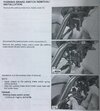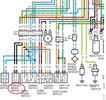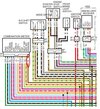MrNCRider
New Member
- Joined
- Oct 27, 2021
- Messages
- 22
- Reaction score
- 9
- Points
- 3
- Location
- Orange County, CA, USA
I recently acquired a 2015 NC700X DCT. When I turn the ignition key from "Off" to "On" the dashboard goes through its initialization routine where the various indicators light up and turn off again. However, the parking brake indicator doesn't light up at all. It doesn't light up when I engage the parking brake so I don't know if it works. Is the parking brake switch that controls this indicator broken? Or is the indicator light on the dashboard broken? Anyone have any advice on troubleshooting?





